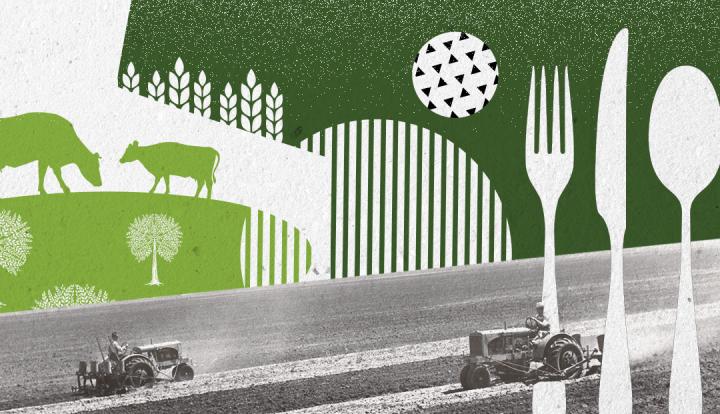
Credit: Egan Jimenez, Princeton University
Modern-day agriculture faces two major dilemmas: how to produce enough food to feed the growing human population and how to minimize environmental damage associated with intensive agriculture. Keeping more nitrogen in soil as ammonium may be one key way to address both challenges, according to a new paper in the Proceedings of the National Academy of Sciences (PNAS).
Today’s use of nitrogen fertilizers contributes heavily to greenhouse gas emissions, air pollution, and water pollution, but they are also essential for growing crops. Reducing this pollution is critical, but nitrogen use is likely to grow with increased food production. At the same time, the world’s human population is increasing, and agriculture needs to efficiently produce enough food to feed everyone without resorting to clearing more forests for agriculture.
In the past, farmers have managed to increase food production by adding more nitrogen fertilizers to their farm lands, but doing so is no longer a viable or acceptable solution. Instead, farmers should consider shifting to a blend of nitrate and ammonium, the researchers argue, which can decrease pollution and increase food production. Ammonium, a form of nitrogen, binds to soil and so is less likely to leach into waterways.
“Present fertilizer systems are polluting, inefficient, and damaging to ecosystem health,” said paper co-author Guntur Subbarao, a senior researcher at the Japan International Research Center for Agricultural Sciences (JIRCAS). “If farming can shift from relying entirely on nitrate in soils to a system with a blend of nitrate and ammonium, it could have far-reaching consequences in limiting nitrogen pollution while boosting crop yields.”
“New tools for maintaining more existing soil nitrogen in the form of ammonium could also enable selection of crop varieties that achieve higher yields through a blend of nitrogen forms,” said co-author Tim Searchinger, a senior research scholar at the Center for Policy Research on Energy and the Environment, which is based at Princeton University’s School of Public and International Affairs. “The prospect exists for a double-benefit that reduces nitrogen pollution, including greenhouse gas emissions, and helps the world to save forests by producing substantially more food on the same land.”
Most strategies for mitigating nitrogen pollution rely on limiting pollution at the “front end” – by attempting to more carefully apply fertilizer. However, the authors explain that no matter how carefully fertilizer is applied, there is always a leakage of nitrogen at the “back end.” This leakage occurs because soil nitrogen in croplands quickly turns into nitrate, a form of nitrogen that easily leaches into groundwater and waterways and whose breakdown releases nitrous oxide, a powerful greenhouse gas.
This is where ammonium comes in, the authors say. It does not degrade into nitrous oxide unless turned into nitrate first. The article shows that while high levels of ammonium are toxic to most plants, a little appreciated line of research has shown that a mixture of nitrate and ammonium tends to increase crop yields substantially, even by 50% or more, compared to the common soil conditions today that are nearly all nitrate.
This academic finding was irrelevant until recently because microorganisms in crop fields rapidly turn nitrogen into nitrate in a process known as nitrification. However, the authors identify two emerging ways of keeping a greater balance of nitrogen forms in soils. One is to use synthetic nitrification inhibitors with coatings to limit nitrification for extended periods. The other is to take advantage of the natural ability of some plants to prevent nitrification. A plant trait that prevents microbes from converting ammonium to nitrate was first discovered in a commonly planted tropical grass, but researchers have recently begun breeding varieties of all the major grains, like wheat, to have this property.
By cultivating plants that benefit from ammonium and that aid ammonium retention in the soil by inhibiting nitrification, farmers, scientists, and policymakers could effectively increase food production while minimizing environmental degradation. The authors recommend additional research efforts, as there is currently no large-scale funding support for these efforts. They also recommend policies that shift fertilizer subsidies toward fertilizer forms or crop varieties that inhibit nitrification.
“One key benefit of this research is that once these varieties are created, all farmers around the world should be able to use them without additional cost and with the benefit of higher yields,” Subbarao said.
###
The paper, “A ‘more ammonium solution’ to mitigate nitrogen pollution and boost crop yields,” was published in PNAS on May 26, 2021. This work was supported by JIRCAS, CRP-WHEAT, and the Walton Family Foundation.
Media Contact
B. Rose Huber
[email protected]





